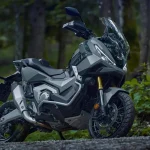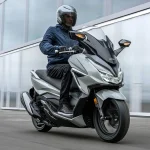Generally, a motorcycle engine is used to power a motorcycle. It can also be referred to as a motorbike or trike. It has a wide range of purposes, and the design varies accordingly. It can be used for off-road riding, sport riding, commuting, and long-distance travel.
Crankshaft
Generally, crankshafts for motorcycle engines are forged or cast. However, there are also welded crankshafts. These crankshafts are a lot stronger and less prone to defects than forged crankshafts. However, these crankshafts cost more and require a high level of maintenance.
Crankshafts are made of cast iron, steel, and aluminum. These materials have great torsional stiffness. They are also lightweight, which reduces heat at high speeds and provides better throttle response.
Cylinders
Depending on the engine’s configuration, the cylinders can be arranged in a variety of ways. The number of cylinders used for an engine is important because it determines its power and character. It also has an effect on the overall size of the motorcycle.
Some cylinder configurations are better suited for certain riding conditions. For example, a single cylinder engine works well in a dirt bike because it offers smooth, predictable power delivery. It’s also easier to work on than a regular in-line engine.
Pistons
Despite the fact that the pistons in bike engines are relatively small, they have a big effect on the durability of the engine. Modern pistons are usually made of aluminum alloy. This material is light but tough. They are also usually cooled with oil jets.
Two-stroke engines are the most common types of piston engines. These engines burn either diesel or natural gas. They also come in three rod and one piston variants.
Air filters
Having a proper air filter for your bike engine is the first step in keeping your engine in peak condition. It not only helps in removing the dust and grime from the air, but also ensures that there are no foreign particles entering your engine.
There are many different types of air filters available. Some of them are oil based, while others are made from paper. Oil based filters offer better air flow and are also easier to clean. They are also much more environmentally friendly than their paper counterparts.
Silencer system
Using a silencer is the obvious choice for riders who want to reduce their noise levels while still allowing the engine to breathe. Adding a silencer is a simple and cost effective way to make your ride more enjoyable and performance-enhancing.
A muffler or silencer is a piece of metal that is placed at the end of the exhaust pipe. It reduces noise by absorbing sound waves before they get to the passenger compartment.
Lubrication system
Keeping the engine in a good condition and functioning at its best is a must. Choosing the right lubrication system for your motorcycle is a crucial step. It depends on the type of engine you have and your riding style.
An engine lubrication system helps to reduce friction between moving engine parts. It also prevents corrosion of the engine components. It also prevents the loss of lubricant when the engine is accelerated or braked. This is vital to ensure a long engine life.
Ariel Square Four
Despite its age, the Ariel Square Four bike engine is an interesting piece of motorcycling history. It was built for almost 30 years and remains popular among discerning enthusiasts.
Ariel Square Four was first introduced at the Olympia Motorcycle Show in 1930. It was equipped with a chain driven overhead camshaft. The engine shared the same crankcase as the original OHC engine. Ariel was already a well known manufacturer of single and two cylinder bikes. The Square Four was designed for long trips, with passengers or sidecars.
Desmodromic V-twin
Originally, a Desmodromic V-twin bike engine was a cylinder-head that features two valves per cylinder. The valves are operated by a spring instead of a camshaft. This eliminates valve float and valve failure, which occurs when the valves are opened and closed at different speeds. The valves are also opened and closed more efficiently, which is beneficial for continuous high-rpm engines.
Unlike other types of engine, the Desmosedici power-unit was designed to tolerate stress generated by simultaneous combustion. This is the case because the crankshaft is turned faster by the higher engine revs.
Two-stroke vs four-stroke
Choosing which type of engine to put in your motorcycle is an important decision. Whether you’re a novice or an experienced rider, you’ll want to know which type of engine will provide the best power for your needs.
A two-stroke engine produces more power per unit weight than a four-stroke. They have a smaller engine size and fewer parts, and are therefore more convenient to repair. However, two-stroke engines tend to have a smaller range of power, and tend to produce less torque at higher RPMs.











